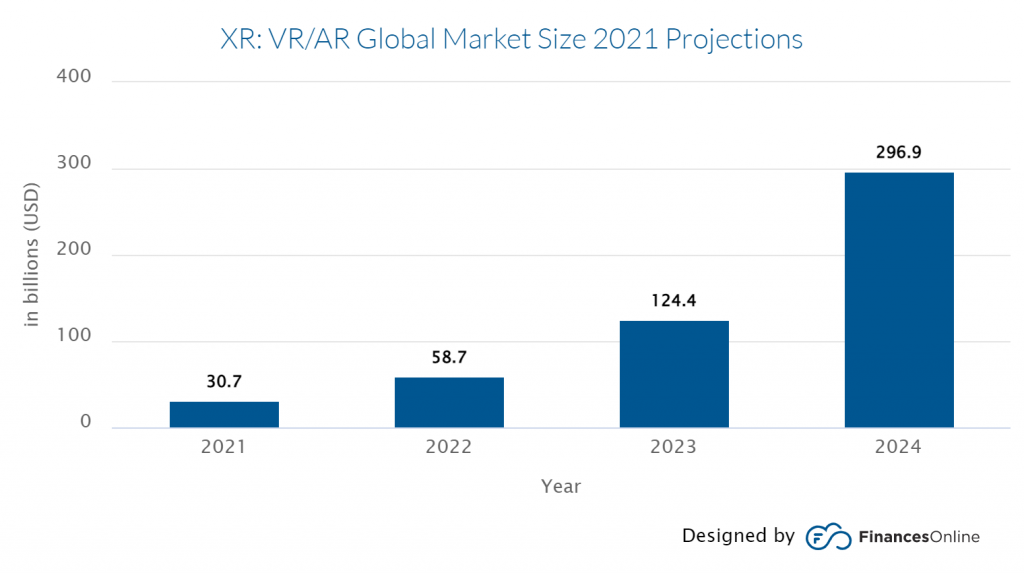Brands are entering the Metaverse: products dematerialize and become virtual goods, paving the way for new types of interactions and markets with consumers.
Marketing, video games, and the Metaverse. What do these three things have in common? While the connections between video games and marketing may seem more immediate, as well as the conjunction between video games and the Metaverse, it may initially appear more challenging to bring all these aspects together. However, as will be seen in this article on marketing in video games, they are closely intertwined.
Video games: a growing market from all perspectives.
Having to fill the time spent indoors due to the pandemic, many people sought refuge in the digital world: socializing and gathering was possible without any limitations and at any time. It is the need for people to meet and interact with each other that has led to tremendous growth in the gaming industry and the rise of the Metaverse. Thanks to the ability to offer interactions with other users, the gaming industry has weathered the current economic crisis remarkably well, outperforming other entertainment companies such as the film and television industry, which have experienced significant setbacks.
In 2020, the gaming market saw a revenue of over $159 billion and shows positive prospects for future growth.
The consequences of this situation have led to a significant increase in the number of gamers worldwide, involving up to 26% of the global population.
Furthermore, the vast choice of games, devices, and modes of play has created a diverse community of gamers. Although mobile phones remain the most widely used devices among gamers, there has been a recent increase in the adoption of AR and VR technologies (Augmented Reality and Virtual Reality).
“In 2020, the gaming sector experienced significant growth, with a market that continues to expand in Italy year after year and has achieved record numbers in the past twelve months. This significant growth is not only a result of the pandemic, which has kept us spending more time at home but also a testament to the growing interest in video games as a form of entertainment and communication. 2020 marked a turning point in the social and cultural perception of the medium, bringing a wider understanding among the general public of the potential of video games as tools for socialization and learning.” – Marco Saletta, President of IIDEA.
Although XR technologies are predominantly associated with video games, with an estimated value of $189 million in 2020, it is essential to recognize the numerous applications beyond gaming.
Among the best-selling headsets in 2021, we find Oculus Quest 2, PlayStation VR, and Valve Index taking the top spots.
Given the significant boost in the industry, it is evident that companies are investing in the latest technologies. For example, we have seen the announcement of Apple’s first AR/VR headset launch in 2023 by Mark Gurman.

Marketing in video games: new branding and engagement opportunities for companies.
The aspect we would like to emphasize about the phenomenon of video games is not only the consumer perspective but the impact on companies. Any type of industry is starting to (and can) revolutionize itself towards a true virtual transformation. Through video games, especially virtual ones that will constitute the Metaverse, brands will be able to engage with their consumers in a completely new, unexpected, and immersive way by interacting within a virtual space.
Emerging cases of marketing in video games include:
- Product placement
- Product feedback
- Events
- Virtual products
One of the practices, which would have once been considered science fiction and is seen by many as a prediction from an episode of the series Black Mirror, involves the dematerialization of the real world, transforming tangible goods into virtual products that can be purchased not for the real person but for the virtual alter ego, commonly known as an Avatar. This type of practice could be defined as a new form of “virtual product placement”: just as specific brands are inserted into films as part of advertising promotion within a narrative, the same can happen (and has already happened in some cases, such as in the video game FIFA) in video games. Numerous companies have already imported their products into video games, ranging from the fashion and automotive industries to design and home decor. Pioneers in this field include Vans, Gucci, Prada, BMW, and Porsche.
In July 2021, the sportswear company Vans became part of the world of Roblox by creating the Vans World Skatepark. Users are allowed to visit the Vans park and can choose to skateboard or purchase virtual products from the brand.

The issue is not as complicated as it may seem, and in fact, very similar practices have been present for several years. In games like The Sims or Grand Theft Auto, users themselves proposed modifications to the game’s real structure to introduce specific features. For example, through mods (short for “modifications,” in the gaming context used to identify elements modified from the real game created by enthusiasts), it is possible to customize the clothing of game characters by recreating real brands and existing collections. With the entry of brands into the virtual world, mods are replaced as the companies themselves upload exclusive, unique, and valuable items. In this way, companies have decided to meet the users’ need for greater customization within the virtual world. The value of the object, which can be defined as a true product, is acquired through the creation carried out by the brand and released in the form of skins or through NFTs and blockchains, which also attribute significant value due to artificial digital scarcity and the possibility of resale.
At the moment, the most common examples are certainly related to clothing products, but commerce in the metaverse is unstoppable. Another growing market is the sale of virtual lands and lots, reaching considerable figures. The Sandbox has created a comprehensive guide to buying and selling land on the platform. The instructions and advice are available to anyone with internet access and can be found in the company’s information section on its website.
Through the metaverse (for further information, you can read this article), which can be defined as a virtual space, not real but which can also refer to reality, brands can create their own fully customized and entirely new space to welcome and interact with people. Whether it’s an island in Animal Crossing or a space in Roblox, companies are allowed to pave the way for endless possibilities of action, using existing video games or creating new ones. The brand Balenciaga launched its Fall 2021 Collection within a video game. The gameplay allowed users to explore and move within a virtual world, creating different paths while wearing the new collection in a store, in nature, or on the street. Ultimately, users walk the virtual runway as models. Lancôme’s Advanced Génifique, on the other hand, created a 3D online shop that allowed people to purchase products while receiving consultations and information.

Furthermore, a lesser-known and unusual mode of advertising and campaign strategy involves the partnership between brands and virtual influencers from video games and beyond. The topic, known as virtual influencer marketing, is as intriguing as it is complex and will be addressed in a dedicated article in the future.
From marketing in video games to virtual transformation
In addition to exploring the metaverse for branding and customer engagement, companies have also begun to leverage video games for other purposes, in a broader virtualization journey.
Among the possible innovations for companies, training, and education are certainly prominent. People have the opportunity to gather and collaborate, feeling part of a collective within a single virtual space. Interaction through avatars allows individuals to engage in more natural actions compared to flat video conferences.
Events of all kinds present high-potential use cases. South by Southwest (SXSW) organized a virtual conference with elements and graphics resembling those found in video games. The main objective was to recreate all the elements and encounters present in a real festival, digitally, through the control of realistic avatars. The event boasted the participation of over 100,000 attendees who took part in various activities.
It is now evident that any type of event can be replicated within the metaverse. In August 2021, through the video game Fortnite, Ariana Grande staged a massive concert with numerous costume changes and special effects, attracting over 1 million viewers.
Training, both in soft and hard skills, is another growing area. Training in the metaverse allows companies to educate their employees through simulations in a completely safe and protected 3D environment, providing significant learning opportunities, especially for those who need to acquire skills in dangerous or high-risk operations.

What are the consequences of this new triangle?
From the examples mentioned, it is clear that we can already talk about marketing in video games as a practice destined to grow, with leading and daring companies taking their first steps.
And marketing is just the first step.
It is now certain that new modes of buying and selling will soon become hybrid: when virtual stores become established, companies will have the enormous opportunity to expand their target audience, reaching people who would be inaccessible in reality.
Some brands also see the possibility of creating digital twins as a new path towards planet sustainability, limiting excessive production and giving an eco-friendly characteristic to the Metaverse.
From a social perspective, the increasing importance and relevance of video games and virtual reality in society is the best way to eliminate old prejudices associated with the image of a gamer and, once again, promote more inclusive services.


